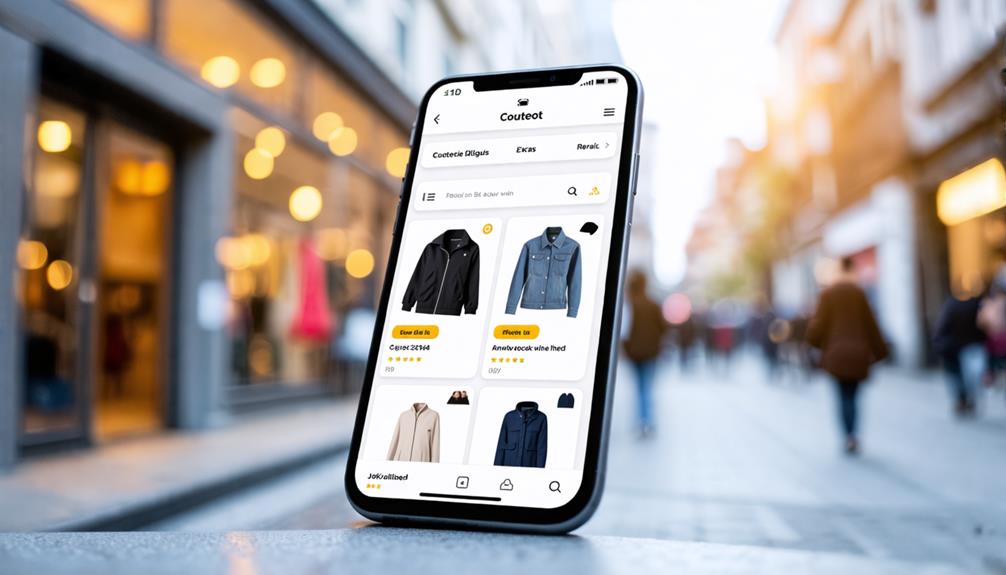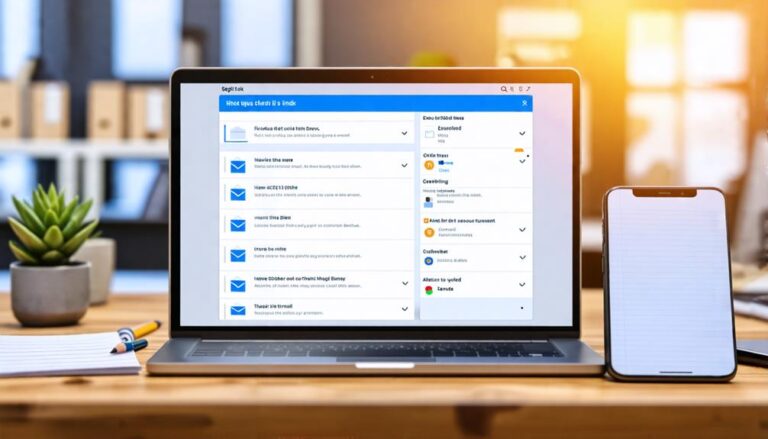You might think that designing an e-commerce app for your retail store is a luxury only big brands can afford. However, in today's digital marketplace, it's a necessity and a lucrative side hustle for entrepreneurs. By creating a tailored app, you're not just making it easier for customers to shop from their mobile devices—you're also gaining a wealth of data on their shopping habits and preferences. This information can be a game-changer for your marketing strategy, but only if you know how to harness it effectively.
So, how can you turn designing e-commerce apps into a profitable side hustle, and how can you get started?
Step 1: Understand the Market Needs
Before diving into development, research the specific needs and pain points of your target market. Conduct surveys, focus groups, and competitive analysis to identify what features will make your app stand out.
Step 2: Learn the Necessary Skills
Familiarize yourself with the basics of app development. Platforms like Udemy, Coursera, and Codecademy offer courses on coding, UI/UX design, and e-commerce platforms. Even if you plan to hire a developer, understanding these concepts will help you make informed decisions.
Step 3: Choose the Right Tools
Select development tools and platforms that suit your skill level and budget. Tools like Shopify, WooCommerce, and Magento offer robust e-commerce features and can be integrated into mobile apps. For custom builds, consider using frameworks like React Native or Flutter.
Step 4: Design a User-Friendly Interface
A great e-commerce app should offer a seamless and intuitive shopping experience. Focus on easy navigation, fast loading times, and a secure checkout process. Employ best practices in UX/UI design to make the app engaging and straightforward.
Step 5: Develop and Test
Start building the app using your chosen tools. Make sure to test it thoroughly for bugs and usability issues. Beta testing with a small group of users can provide invaluable feedback.
Step 6: Launch and Market Your App
Once the app is polished and ready, launch it on app stores like Google Play and Apple Store. Use social media, email marketing, and SEO strategies to promote it. Highlight the unique features that set your app apart from competitors.
Step 7: Gather Data and Iterate
After launching, use analytics tools to gather data on user behavior and preferences. This data will help you make informed decisions on updates and new features, ensuring the app remains relevant and valuable to users.
By following these steps, you can turn designing e-commerce apps into a profitable side hustle. Not only will you provide a valuable service to retail stores, but you'll also build a steady stream of income for yourself.
Understanding Your Target Audience
Understanding Your Target Audience
Before you start building your side hustle, you need to identify and understand your target audience. This will help you tailor your offerings, user experience, and marketing strategy to meet their specific needs and preferences.
To do this, you'll need to conduct a demographic analysis of your ideal customer, including their age, location, income level, and interests. This information will give you a clear picture of who your customers are and what they want from your side hustle.
You should also analyze user behavior to understand how your target audience interacts with your brand and your competitors. This includes studying their browsing patterns, purchase history, and search queries.
By combining demographic analysis with user behavior insights, you'll be able to create buyer personas that accurately represent your target audience. These personas will guide your decisions, ensuring that your side hustle meets the needs and expectations of your customers, increasing the likelihood of adoption, engagement, and ultimately, sales.
With a solid understanding of your target audience, you'll be well on your way to creating an effective and successful side hustle.
Features of a Great E-commerce App
As you build your e-commerce side hustle, you'll want to prioritize features that make shopping a breeze for your customers.
To start, you'll need to create a seamless user experience that makes it easy for customers to find and buy what they're looking for.
Seamless User Experience
With a focus on conversion-driven design, your e-commerce side hustle should provide a seamless user experience by incorporating features that facilitate effortless navigation, streamlined checkout processes, and intuitive product discovery.
To achieve this, you'll need to prioritize mobile optimization, ensuring that your platform is designed specifically for mobile devices.
This means using clear and concise typography, intuitive gestures, and a responsive design that adapts to various screen sizes.
Personalized Product Recommendations
How can you encourage customers to explore more products and increase average order value in your e-commerce side hustle? By implementing personalized product recommendations, you can cater to individual customer behavior and boost sales. A great e-commerce platform leverages machine learning algorithms to analyze customer data, browsing history, and purchasing patterns to suggest relevant products.
| Recommendation Type | Description | Benefits |
|---|---|---|
| Content-based filtering | Recommends products with similar attributes to previously purchased or browsed items | Increases algorithm efficiency and accuracy |
| Collaborative filtering | Suggests products based on the behavior of similar customers | Identifies new products and increases average order value |
| Hybrid approach | Combines content-based and collaborative filtering methods | Enhances customer satisfaction and loyalty |
| Context-aware recommendations | Takes into account customer location, time, and device used | Increases conversion rates and enhances user experience |
Secure Payment Options
To build trust with your customers and increase conversion rates for your side hustle, you need to offer a variety of secure payment options that cater to their individual preferences. You can achieve this by integrating multiple payment gateways, such as PayPal, Stripe, or Apple Pay, into your e-commerce platform. This allows customers to choose their preferred payment method, making them feel more secure and in control.
To further enhance security, you should implement robust fraud prevention measures. This includes using encryption to protect sensitive information, such as credit card numbers, and implementing two-factor authentication to verify transactions.
You should also use machine learning algorithms to detect and prevent suspicious activity.
User Experience Design Considerations
Creating an intuitive and seamless user experience is crucial for e-commerce apps, especially when your side hustle involves selling products online. An optimized user experience directly impacts customer satisfaction and conversion rates, which are essential for growing your side business. Prioritizing user experience design considerations will help keep your customers engaged and coming back for more.
One important aspect is mobile responsiveness. Ensure that your app's layout and design adapt to various mobile devices and screen sizes. This adaptability will provide a consistent and user-friendly experience for your customers, regardless of the device they use. For a side hustle, this can mean the difference between a successful sale and a missed opportunity.
Additionally, adhere to accessibility standards to make your app usable for customers with disabilities. Follow guidelines for color contrast, font size, and navigation to ensure that all customers can use your app easily and effectively. This inclusivity not only broadens your potential customer base but also enhances your brand's reputation.
By prioritizing user experience design considerations, you can create an app that meets your customers' needs, builds brand loyalty, and drives business growth.
Focusing on mobile responsiveness and accessibility will provide a high-quality user experience that sets your side hustle apart from the competition.
Technical Requirements for E-commerce Apps
As you start building your e-commerce side hustle, you'll need to take into account the technical requirements that'll guarantee its success.
You'll want to make certain your platform has a scalable architecture that can handle a growing number of users and transactions, as well as robust data security measures to protect sensitive customer information.
Additionally, you'll need to reflect on integration requirements, such as connecting your platform to existing inventory management systems, payment gateways, and other third-party services.
Scalable Architecture Needs
Building a scalable architecture for your side hustle's e-commerce app is crucial for handling traffic spikes, managing numerous concurrent users, and processing transactions swiftly without compromising performance. Here are some essential components to consider:
| Component | Description |
|---|---|
| Cloud Infrastructure | Offers scalable computing resources and storage to support your growing business |
| Load Balancing | Ensures efficient resource utilization by distributing traffic across multiple servers |
| Microservices Architecture | Breaks down the app into smaller, independent services for enhanced flexibility |
| API Management | Manages API requests, security, and analytics to keep your app running smoothly |
| Container Orchestration | Automates deployment, scaling, and management of containers to streamline your operations |
Data Security Measures
To safeguard sensitive customer information in your side hustle, you must implement robust data security measures. This involves incorporating advanced encryption protocols to protect customer data both in transit and at rest.
Utilize industry-recognized encryption standards, such as Transport Layer Security (TLS) and Secure Sockets Layer (SSL), to encrypt data transmitted between the client and server. Additionally, consider implementing encryption at the database level to further safeguard sensitive information.
Your side hustle must also comply with relevant compliance regulations, such as the Payment Card Industry Data Security Standard (PCI-DSS) for processing payments and the General Data Protection Regulation (GDPR) for handling EU customer data.
Regularly review and update your data security measures to guarantee continued compliance and protection against evolving threats. Implementing these measures not only protects customer data but also helps to build trust and maintain the reputation of your side hustle.
Prioritizing data security is essential for the long-term success of your venture.
Integration Requirements
Your side hustle app must seamlessly integrate with various third-party services, such as payment gateways, shipping providers, and social media platforms, to provide a smooth and efficient customer experience. To achieve this, you'll need to implement API integrations that enable real-time data exchange between your app and these services.
For instance, integrating with payment gateways like PayPal or Stripe allows customers to make secure payments, while shipping solutions like USPS or FedEx enable accurate shipping estimates and tracking.
Inventory management is another vital aspect of integration, ensuring that your app accurately reflects product availability and updates in real-time. Customer relationship management (CRM) integrations help you manage customer interactions and preferences, while analytics tools like Google Analytics provide valuable insights into app performance and user behavior.
Additionally, integrating with social media platforms enables multi-channel selling, expanding your reach and customer base. Finally, user authentication integrations, such as OAuth or OpenID, simplify the login process, enhancing the overall user experience.
Best Practices for Search and Navigation
Effective search and navigation functions are essential for e-commerce apps, allowing users to quickly find the products they need and driving conversions. You want to make it easy for users to discover products, which is why you need to implement robust search algorithms and intuitive navigation patterns.
When designing your app's search function, consider the following best practices:
| Search Feature | Best Practice |
|---|---|
| Autocomplete | Provide instant suggestions as users type |
| Filtering | Allow users to filter results by price, brand, and category |
| Sorting | Offer options to sort results by relevance, price, and rating |
| Search History | Save users' search history for quick access |
| Error Handling | Handle typos and incorrect searches with helpful suggestions |
For those looking to start a side hustle in e-commerce, these best practices are crucial. Implementing them can significantly improve user experience, leading to higher satisfaction and increased sales. By focusing on robust search features and intuitive navigation, you set the foundation for a successful e-commerce side hustle.
Measuring App Performance and Success
Measuring app performance and success is crucial for anyone running a side hustle, as it helps pinpoint areas for improvement, enhance user experience, and ultimately drive growth.
Tracking key performance indicators (KPIs) is essential to understand how your app is performing. App analytics tools offer valuable insights into user behavior, enabling you to make data-driven decisions.
Focus on conversion metrics, such as completed sales, abandoned carts, and average transaction value. These metrics help you assess the effectiveness of your app's checkout process and identify opportunities for enhancement.
Additionally, track user engagement metrics like session length, bounce rate, and time spent on specific screens. These metrics show how users interact with your app and where they encounter difficulties.
Conclusion
As you design your e-commerce app for your side hustle, keep in mind that a whopping 62% of online shoppers use their mobile devices to make purchases.
With the average user checking their phone over 150 times per day, it's essential to prioritize a seamless user experience, robust security, and personalized features to capture and retain customers.
By doing so, you'll be well on your way to creating a successful retail app that drives engagement and loyalty, turning your side hustle into a thriving business.

















































0
View comments